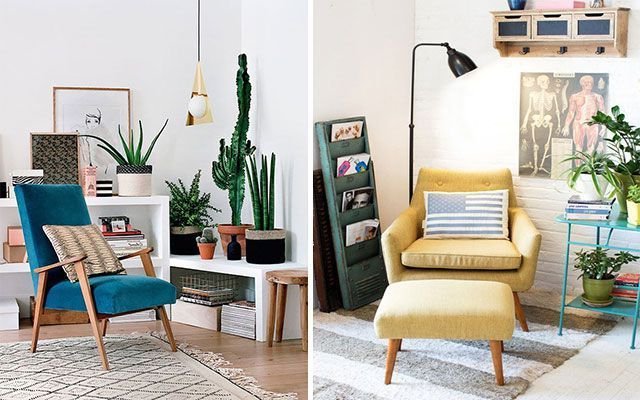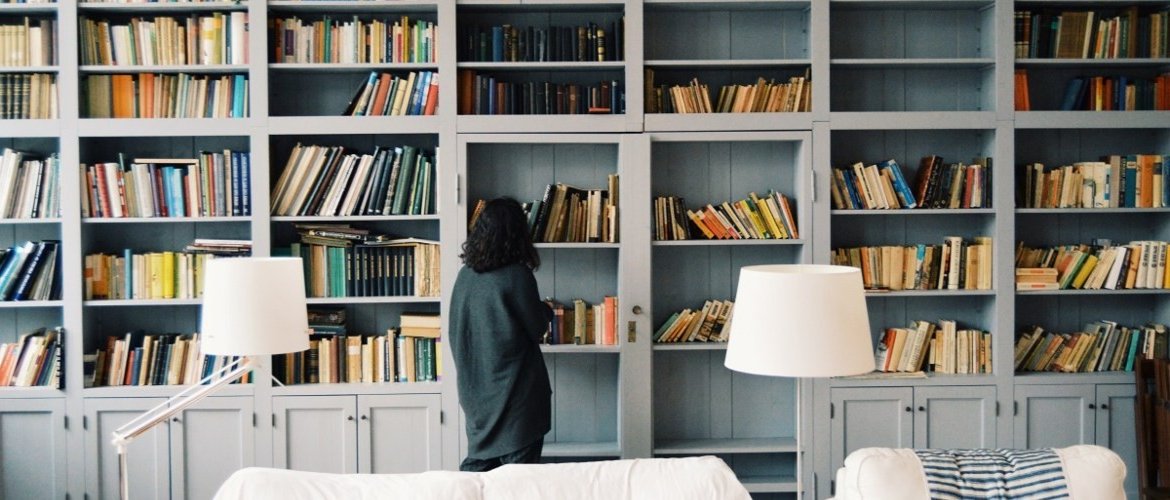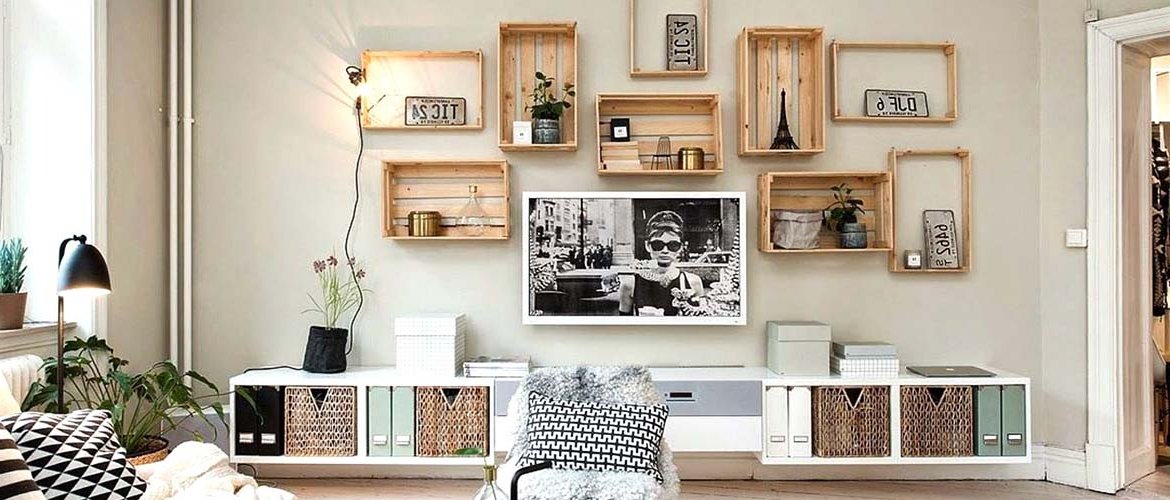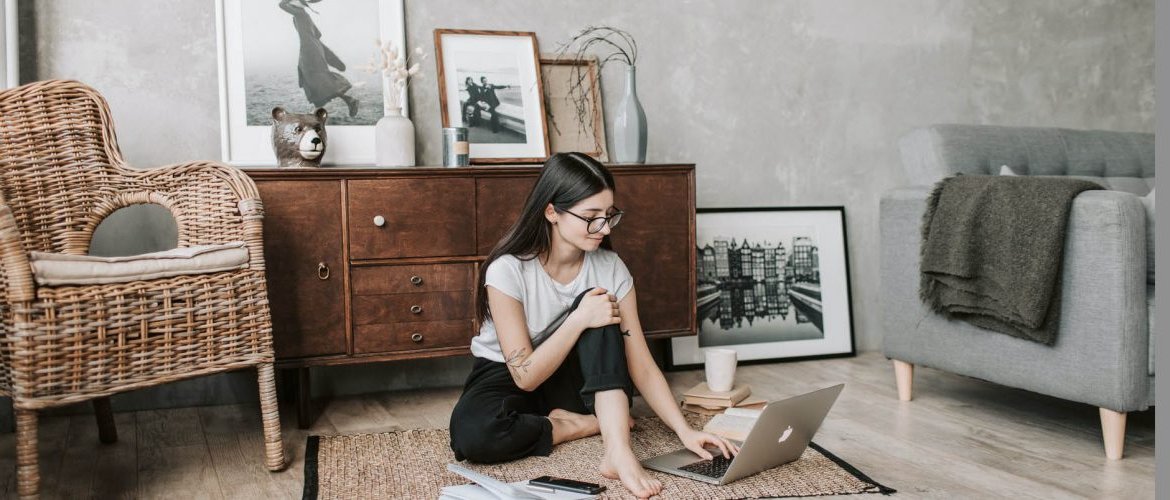Ideas to decorate your side tables
Wondering how to decorate those side tables you have scattered around the house, next to the sofa, the reading chair or that desk chair?
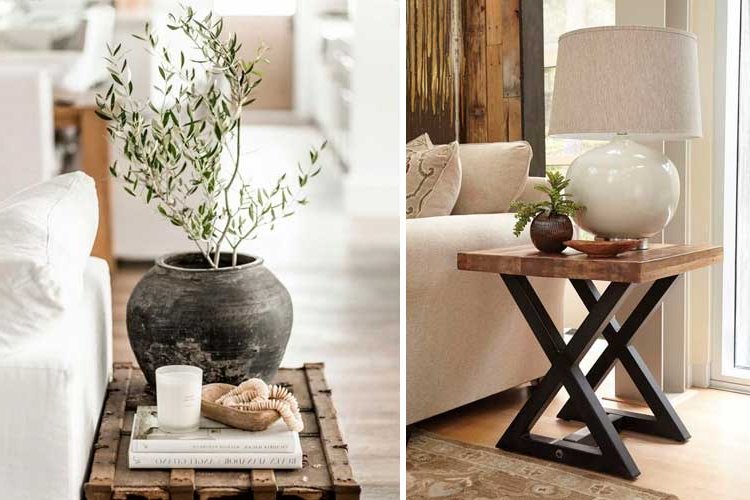
Well, you're in luck, because today we dedicate the post to them!
The side tables are those small but tough little tables that can be used for both a broken and a broken: leave the cell phone charging, support the book we just read or that cup of tea we just drank while resting in the relaxing chair.
The most common are living room side tables, which are located in the living area in a corner, next to the sofa and / or armchairs, and are usually used to place the table lamp or to leave the cell phone charging.
But we can also find them in any reading corner, next to the fireplace or in a conversation area - sometimes they can even replace the bedside table in the bedroom!
However, although it is very present throughout the house, when it comes to decorating the tables we always tend to focus on the dining table or coffee table, which have more presence.
However, side tables are a piece that we cannot leave out, and most people find them more difficult to decorate because they are smaller in size, and therefore often go undressed.
But here we are here to solve it, and for that we are going to give you in this post some ideas for decorating side tables so you can get inspired. here we go!
How many elements do I put?
Like almost every answer in interior design, "it depends".
Side tables are usually small, so we can't fill them as much as a coffee table, but the number of objects to place will depend on many factors.
Among the main ones, the style of the room (some require fewer complements than others) and the shape and size of the coffee table (there are large and mini, with or without base, multilevel and even compositions of several).
A single element
Ideal for minimalist or wabi sabi environments, which require a minimum number of decorative objects.
They also come in handy when the table is very small or when we want to place a very large object (for example, a large vase with flowers or plants), leaving no space for anything else.


A couple of objects
This type of compositions are more common, especially in these small tables where there is not much room to fit.
Depending on the type of element, a couple of decorative elements can also be valid for more minimal options (as long as they are not too bulky or rich).
In these cases, one of the elements should ideally be taller and more voluminous than the other so that the composition is balanced.
A vase with branches and a smaller bowl or vase without them will be perfect.
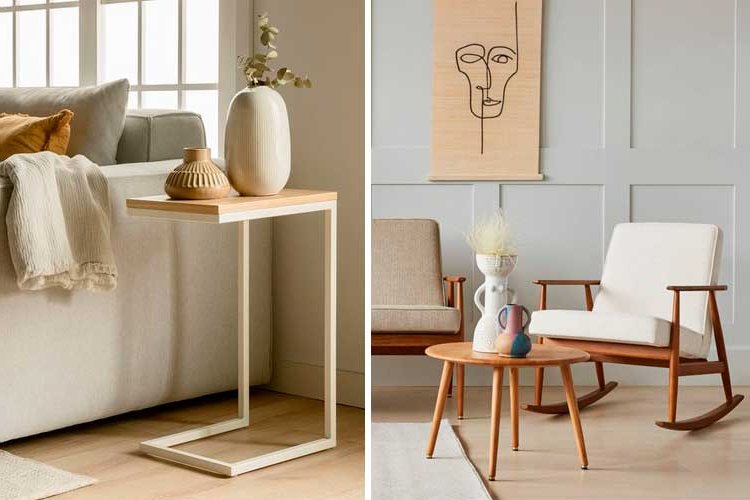

How about a threesome?
If you are into interior design by now you will already know that 3 is the "magic number" for interior design, especially in the styling phase.
Groupings of three objects of different sizes, shapes and heights cause a "click" in the human brain that makes them appear very balanced.
Although there is usually not much space on side tables, there is room for these trios as long as they are the right size.
A narrow and tall element, such as a vase with branches or a candle holder with a stylized candle, combined with a small circular object and another element of a different shape (it can be a figure, a small marker or a rosary of beads) will achieve that "balance effect" typical of the triad.

Four or more
It is less common to put more than 3 elements in a side table, but it is possible if the table has a considerable size or if we are decorating in certain styles.
For example, classic or shabby chic styles are much more likely to fill spaces with decorative accessories than other styles.
In these cases, plants or flowers and books are always present in the combination, combined either with table lamps and decorative figures, or with everyday elements such as bowls, cups or tea jars, so typical of these styles.

What elements do I put and how do I combine them?
While trays for grouping objects are very common on coffee or dining tables, it is more appropriate to place objects directly on top of them on side tables.
Depending on the type of side table and its location (a small table for a reading corner is not the same as a table to support the sofa in the living area), the type of objects will vary.
It will also do so according to the decorative style and the shape and aesthetics of the table.
Books
They are a classic when it comes to styling side tables.
When the table goes in a reading corner, sometimes they are enough on their own to decorate it, as they somehow have to be present in this area.
Sometimes a single open one is also placed upside down, as if it had just been left on the table at the point of reading to be resumed.
This way of decorating the side table brings it to life and "sends a message": in this area, you can read :)
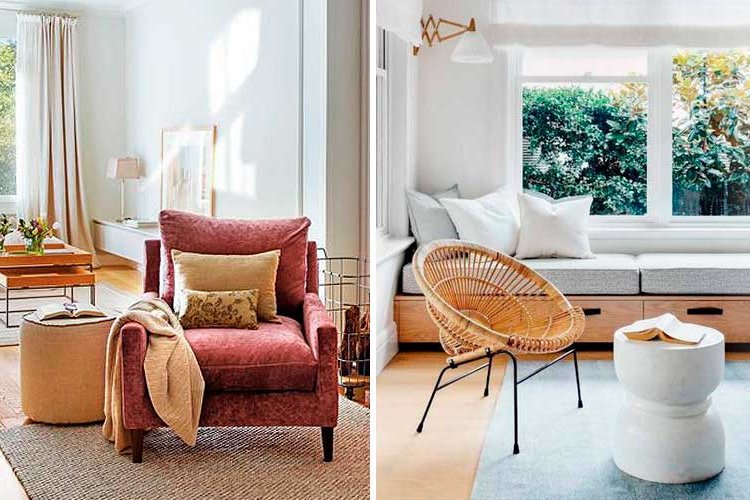
Other times they act more as a decorative element, placing two or three on top of each other. In these cases, books with neutral and decorative covers are chosen (no bright colors or large drawings).
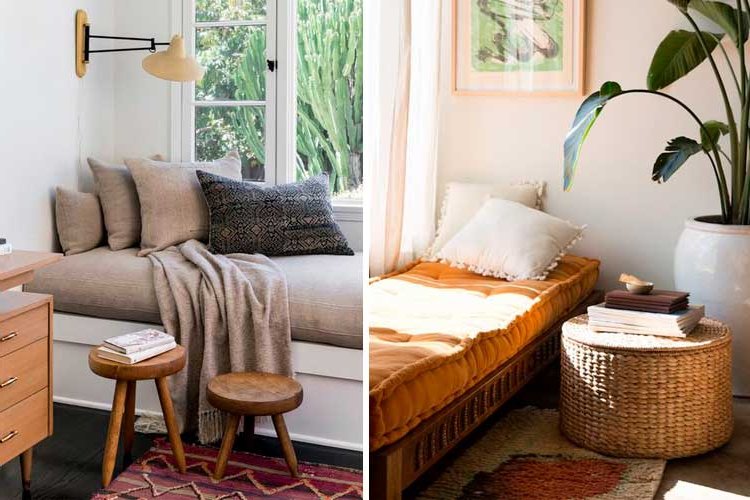
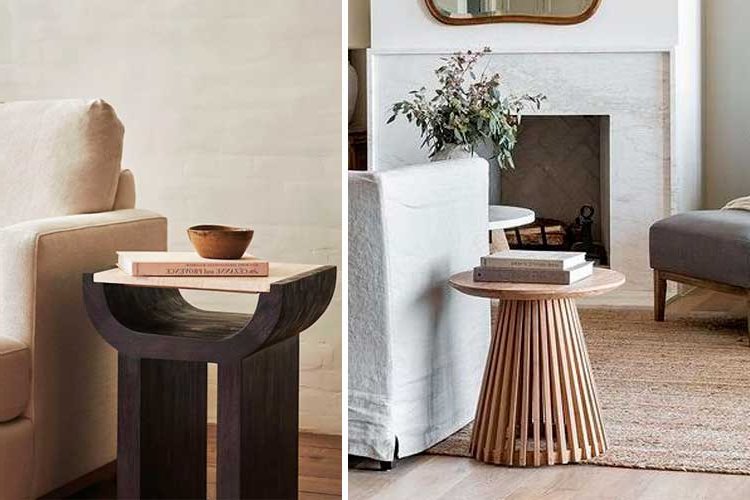
Finally, they often act as small trays to support other objects, thanks to their flat and more or less bulky surface for this type of tables.
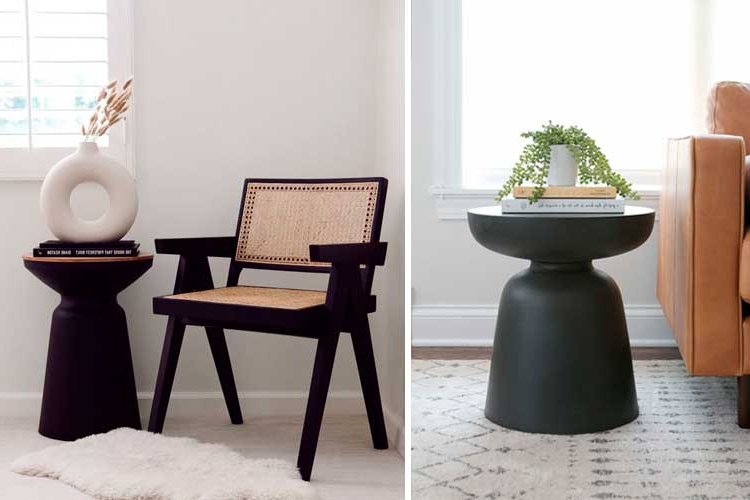
Natural element
Plants, dry branches, flowers... Any natural element (or perceived as such) gives a lot of life to the side tables and are usually common in the decoration of this type of pieces.
Sometimes, a simple vase with a green leafy plant is enough to decorate the small side table.
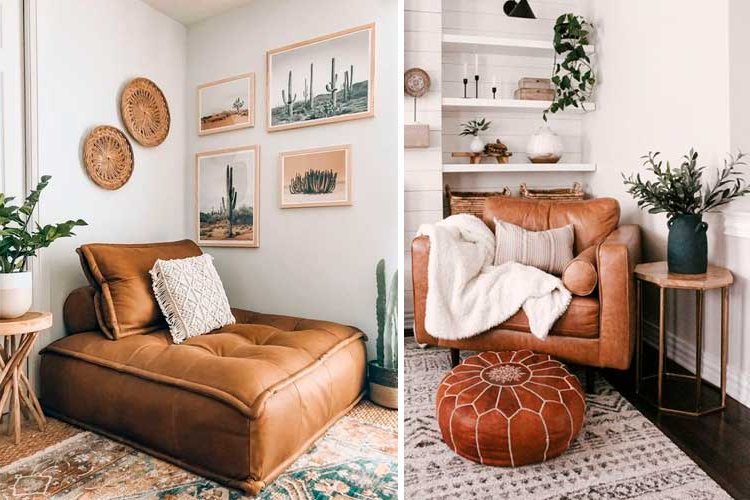
They are also very common to decorate side tables in gathering areas, where a nice bouquet of flowers or a large plant acts as a "symmetrical axis" between the two armchairs that these areas usually have.
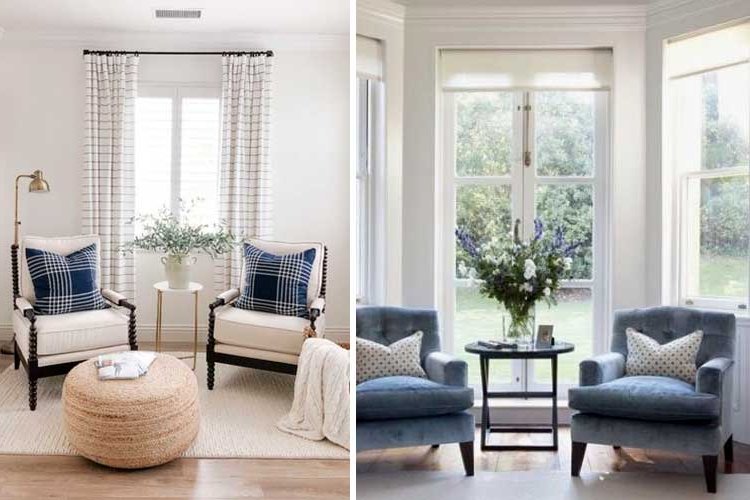
Of course, you can also create around the side table a small garden full of plants and flowers, filling it with different plants and helping us also with floor elements.
For this purpose, side tables with a base or step shape, or wicker or wooden floor baskets that "prolong" the effect of the side table are very useful.

Finally, most of the time, they simply accompany other objects in various compositions (mainly with bowls, books, candles or other small elements).
For this, eucalyptus branches are great.

And remember! If you are not good with plants, you can opt for artificial ones, as long as they are of good quality and you follow these tips to make the plants look natural.
Table lamps
Side tables, along with consoles, dressers and sideboards are the natural habitat of table lamps, as they usually accompany sofas, seats and armchairs that will need some light, and they are usually placed to the side, and not in front, so the volume of these lamps will not hinder the vision.
Table lamps usually provide that "vertical element" needed in two- or three-element compositions, and are especially present on side tables that accompany the sofa in the living area.
In both contemporary and classic styles, the ideal is to combine them with a natural element (a small plant, a few twigs or a bouquet of flowers) and another small decorative complement (a few books, a candle or a figurine will suffice).
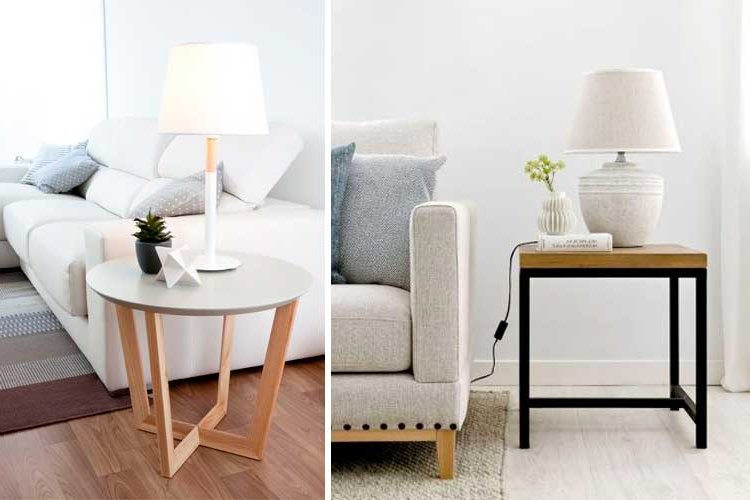
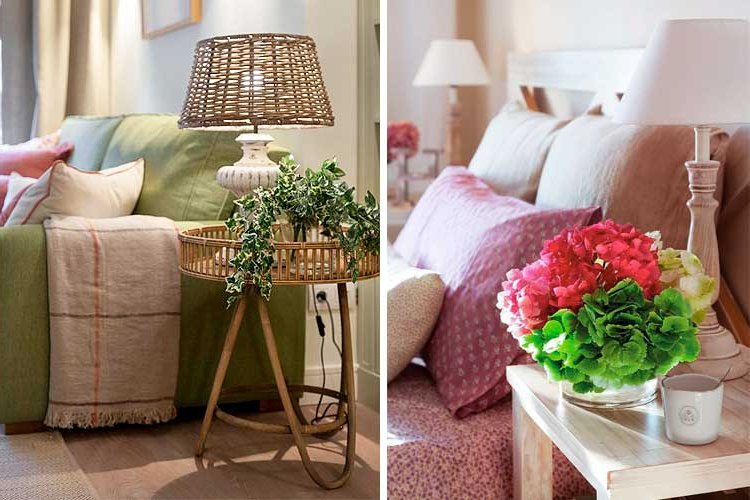
They are also obviously very present when the side table replaces the bedside table in the master bedroom.
In these cases the same rule applies: combine it forming a trio with flat elements (books or a small tray), and some natural element lower than the lamp itself.
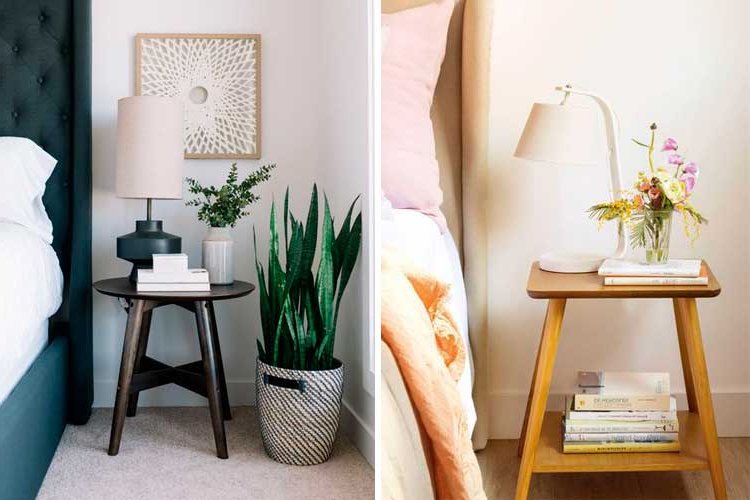
Photo frames
The side table is usually the perfect place to place photo frames. You can put that family photo you like, but if you want it to be decorative, you can opt for a small graphic print, a design you like or a photo in neutral tones (black and white or sepia).
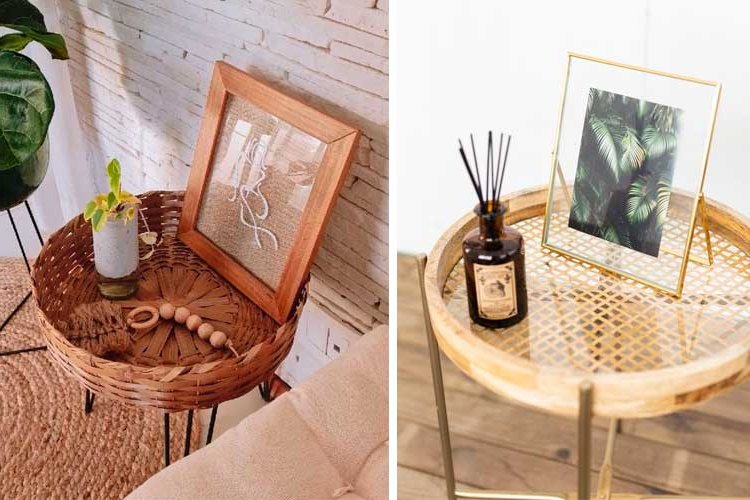
Bowls, vases and other everyday items
You can also decorate your side tables with sculptural or original vases or with everyday items (bowls, cups, jars, saucers, glasses...).
These elements can go alone if you want to give them prominence (to them or to the table), or they can be accompanied by others in usual compositions.

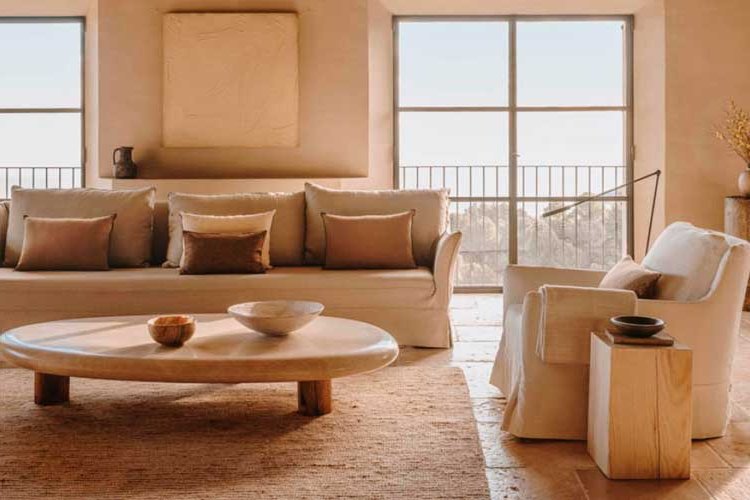
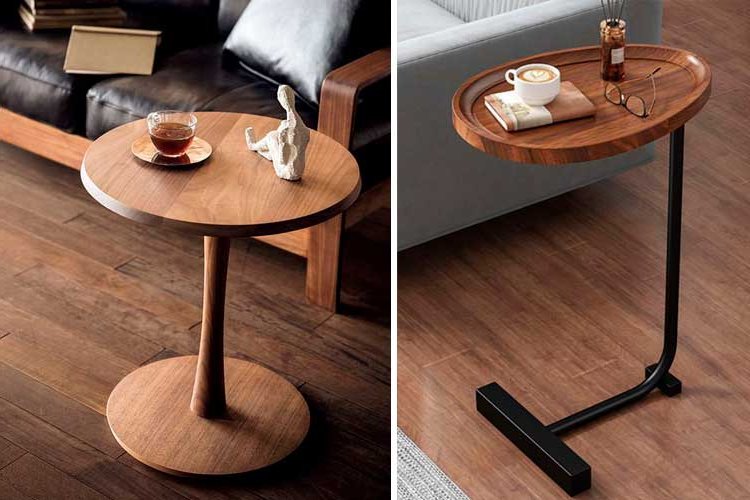
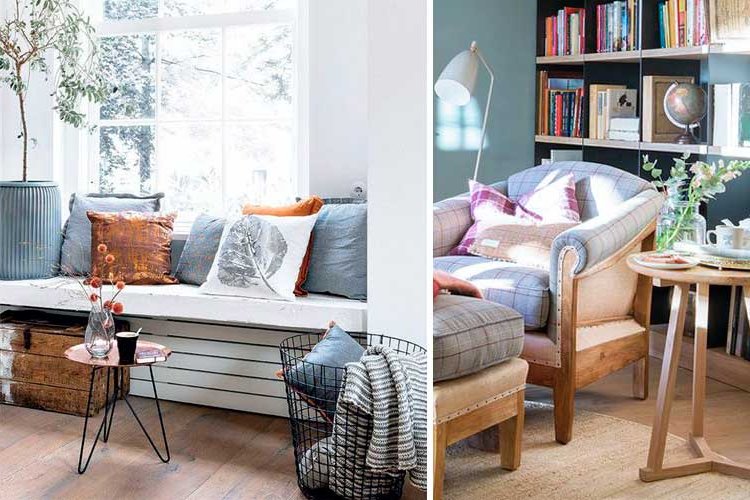
Candles and candlesticks
Finally, you can use candles and candlesticks to decorate side tables.
If you want to decorate with them in an exclusive way, the ideal is to do it with tall and original candle holders or candlesticks, as if they acted as a sculpture.

If instead you prefer the use of small candles to light them from time to time and give a warm touch to your side table, they can go along with more voluminous elements.
Tell me which table you have...
...and I'll tell you how to decorate it.
Most side tables, whether round, square or rectangular, usually have the same format: one or more legs and a top where the elements are placed.
In these cases, any of the options mentioned above is valid.
However, there are some side tables that deviate from the usual format.
This is the case of multilevel tables or nesting tables, which "double" the surface to be decorated.
For these occasions, you can opt for two options:
a) decorate all levels (the most voluminous or vertical elements will usually go in the upper envelope, and the rest will be decorated with books or lower elements.
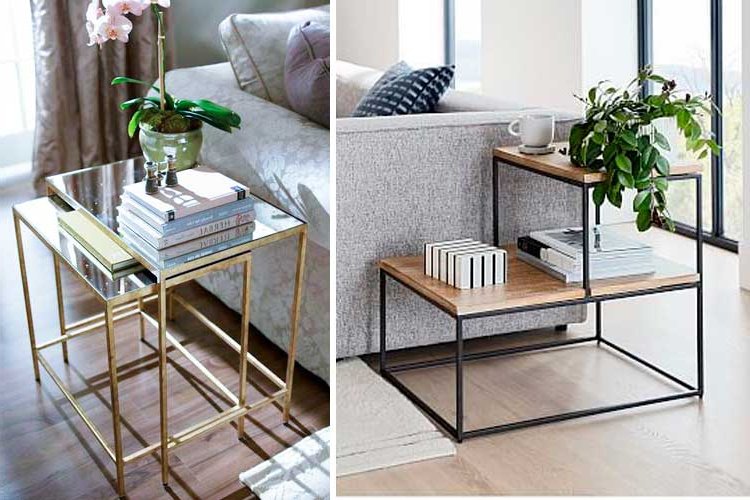
b) put the focus on only one of the levels (it does not have to be the highest) and leave the other one either empty or with only one element that does not "cannibalize" the rest.
This is often the case with "repeating" tables that act as if they were a nesting table, one underneath the other.

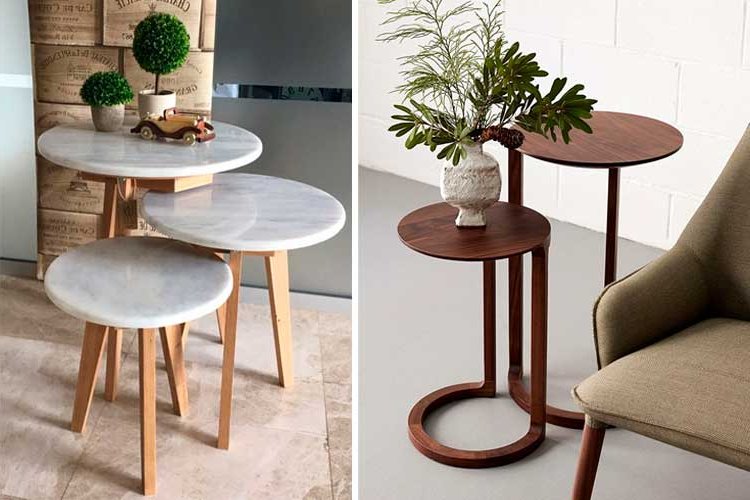
As you can see, despite how small they are, there are many ways to decorate your side table, so cheer up, give some grace to that little table you have there forgotten and you'll see how that corner is reborn :)


